In sailing, it is said that there are those sailors who have hit rocks, and those who will hit rocks.
It was a beautiful fall day on Lake Superior, sailing with my friend, Chas (I know, the name seems like something out of a ’70s comedy—like Caddyshack—but if your father is Charles and you’re Charles Jr., then Chas it is). His boat is a 1984 34-foot Sabre, a fast and stout boat built in Maine and made for long-distance, blue-water sailing. It carries a Westerbeke diesel engine that can propel it to just over six knots, approximately seven in MPH (no clue as to why sailors still use knots, but the group as a whole can be finicky and clubby with their jargon). The trimmings, such as siderails, tables, and cabinets, are all varnished teak, and the accommodations work out just fine for the two of us.
The day before casting off, we installed a replacement autopilot, also known as an autohelm, a device used to steer the boat automatically based on GPS coordinates. Now, this is a crucial piece of equipment. Our plan was to sail from Cornucopia near Bayfield, Wisconsin, traverse the Apostle Islands, cross the big lake to Grand Marais in Minnesota, sail to Isle Royale along the Canadian border, cross the lake again to Ontonagon on the Upper Peninsula of Michigan, sail down that coast, then back through the Apostles. In those seven days, we would sail/motor about three hundred nautical miles. With an average of six knots per hour, we’d be on the water fifty-plus hours. I know that in the days of Horatio Hornblower, those brave sailors stood stoically at the wheel for their long watches, staring at a binnacle (compass) until their eyes glazed over. We are not so hardy, so the autohelm was a must.
Let me, for a moment, rip on my friend, Chas. He’s notoriously cheap. The malfunctioning autohelm just needed a new $60 belt, but instead of taking that hit, he tried to sew the broken belt together with sailcloth twine. This was a fool’s errand. Thankfully, the harbor master guy in Cornucopia (locally referred to as “Corny”) had a spare autohelm that clamped on just fine.
Chas navigated the boat out of the harbor, set the course, and then turned the wheel over to me while he put away groceries down below in the cabin. The boat was on autohelm and headed toward the south end of Eagle Island on our way to Bear Island, where we’d spend the night. I checked the GPS to ensure there were no obstructions along our course. (No, really, I did!) My mistake, I guess, was that I took my eyes off the water and started fiddling with the line that towed the dinghy.
Then we hit the rocks.
Turns out there’s a hidden shoal far off Eagle Island. In spots, the shoal rocks are only three feet under the surface. The sailboat has a four-foot keel that extends down from beneath the hull—so you see the problem. The four-foot keel skidded along the three-foot deep shoal. The abrupt collision knocked Chas to the cabin floor (he was unhurt). The boat then skidded to a hard stop.
I screamed “fuck” over and over, replaced by “Stupid, stupid.” I was the one at the helm, and I should have been watching. The collision was my fault. But I’d checked the GPS! (Later, on further examination, the GPS was set to “De-Clutter,” which meant that it wasn’t showing depths or the names of islands, or ports, or really anything other than blobs of land. Of course, no one wants clutter, but WTF?)
We were stuck on the rocks. The boat wouldn’t move forward or backward, and I was panicked, ready to call out an SOS, “Mayday, Mayday.” But we weren’t sinking. So, then I just felt resigned to calling the Coast Guard for an evacuation, or maybe some old salt with a large barge who could lift the boat up and off. I figured our trip was ruined.
But first, we had to try to free the boat ourselves. I put on a shorty wetsuit and goggles, then jumped into the bone-chilling, 55-degree water. On the rocks, I could see a line of debris that’d been stripped from the end of the keel, and then the keel itself, stuck between rocks. We already knew we couldn’t move forward or backward. But maybe sideways? Chas found the spare anchor, and I swam out with that hunk of steel on a path perpendicular to the boat and then wedged the tines between two boulders. Chas winched the anchor rode tight (“rode” is another of those finicky sailor words, this one for anchor rope). The boat shifted to the side, lifting the keel just a few inches (the heavy anchor actually bent). I had Chas crank the engine into reverse. The boat slowly moved off the rocks. The keel skidded a few more times, but we were able to move into deeper water.
I inspected the keel. These things are constructed of steel and lead, then sheathed in fiberglass. They are meant to be bombproof. So, despite some cracked-off sheathing, the keel was intact.
We sailed on.
And you know what? We had a great time. With a few additional issues, we completed the entire trip. (There are always issues; sailing is like owning a hundred-year-old home built on stilts and standing on the hurricane side of Florida.) Isle Royale was remote and beautiful. At Ontonagon, we ate burgers at a dive bar filled with old rummies. In Black River Harbor, we hiked past waterfalls and through old-growth woods that had never been logged—two-hundred-year-old white pines and maples. Back in the Apostles, we spent a glorious day in the sun, drinking beer and swimming in the brisk lake. That night, a storm moved through Canada. In the distance, we watched as lightning illuminated the thunderclouds, while overhead, millions of stars covered the inky black sky, the Milky Way, like…well…spilled milk. On the way back to Corny, we stayed very, very clear of Eagle Island.
So, there are those sailors who have hit rocks, and those who will hit rocks. Now, I should mention here that I’d already been a member of that elite club. About seven years ago, I hit the rocks in Italy, just outside Naples. I’ll make this story quick…
Stephanie and I had rented a 38-foot Beneteau sailboat at a marina on the island of Procida, just a 30-minute ferry ride from Naples. The day was calm; in fact, no wind was forecasted for the next seven days—great for lounging under the Mediterranean sun but not so good for actual sailing. We loaded up on food and gear and then motored to the island of Ascia, where we dropped anchor in a bay below the fifteenth-century Aragonese Castle. On shore, we ate pasta and fresh branzino at an outdoor trattoria along the main promenade and then sipped aged rum on the boat before going to bed.
In the middle of the night, Stephanie screamed out, “We’ve hit the rocks!”
I woke from a deep rum-induced sleep to hear the thump, thump of our boat banging against something. Looking through the porthole, all I saw was a wall of rock. Once topside, I could see the boat was pounding against a cliff.
Fuck.
Stepanie and I were uncharacteristically organized. I started the engine while Stephanie went to the bow (the front) to operate the electric winch, which would pull up the anchor. The goal here was not to actually pull up the anchor, but to have the winch pull us toward the anchor and away from the rocks. But the anchor wasn’t anchored to anything. I then jumped in the dinghy, started its motor, and ran a line to the stern (back). I accelerated and began towing the stern away from the cliff. That worked; the boat moved into deeper water.
We assumed the worst: that the hull was severely damaged, that we might be taking on water, and that our seven-day Mediterranean cruise was abruptly over. Plus, the cost of damages.
I checked the bilge (the space under the floorboards). No leaks. I then entered the water. It was still night, around 5:00 a.m. I swam around the boat, feeling the hull for any damage. Surprisingly, nothing. We motored further out, set the anchor again, and then tried to get some sleep. (Did I mention that we were naked the whole time?)
In the morning, when I could see, I put on a diving mask and did the inspection correctly. Again, nothing. What had happened was that the indestructible keel had hit rocks beneath the cliff, bounced against those rocks, but had kept the hull from hitting the actual cliff. How fucking lucky was that?
Again, it was my fault; I hadn’t put down enough rode. What little wind that was present changed direction during the night and flipped the anchor, which then didn’t have enough slack in the rode to reset.
Now, I realize that there are those sailors who have hit the rocks, and those who will hit the rocks. But who hits the rocks twice?
I’m now a part of that very elite and exclusive club (of idiots).
We made it! (No, we didn’t see any moose.)
Isle Royale at dawn
Entrance to Ontonogon Harbor
Chas with old-growth White Pine
Thunderclouds over Canada
Aragonese Castle on the island of Ascia


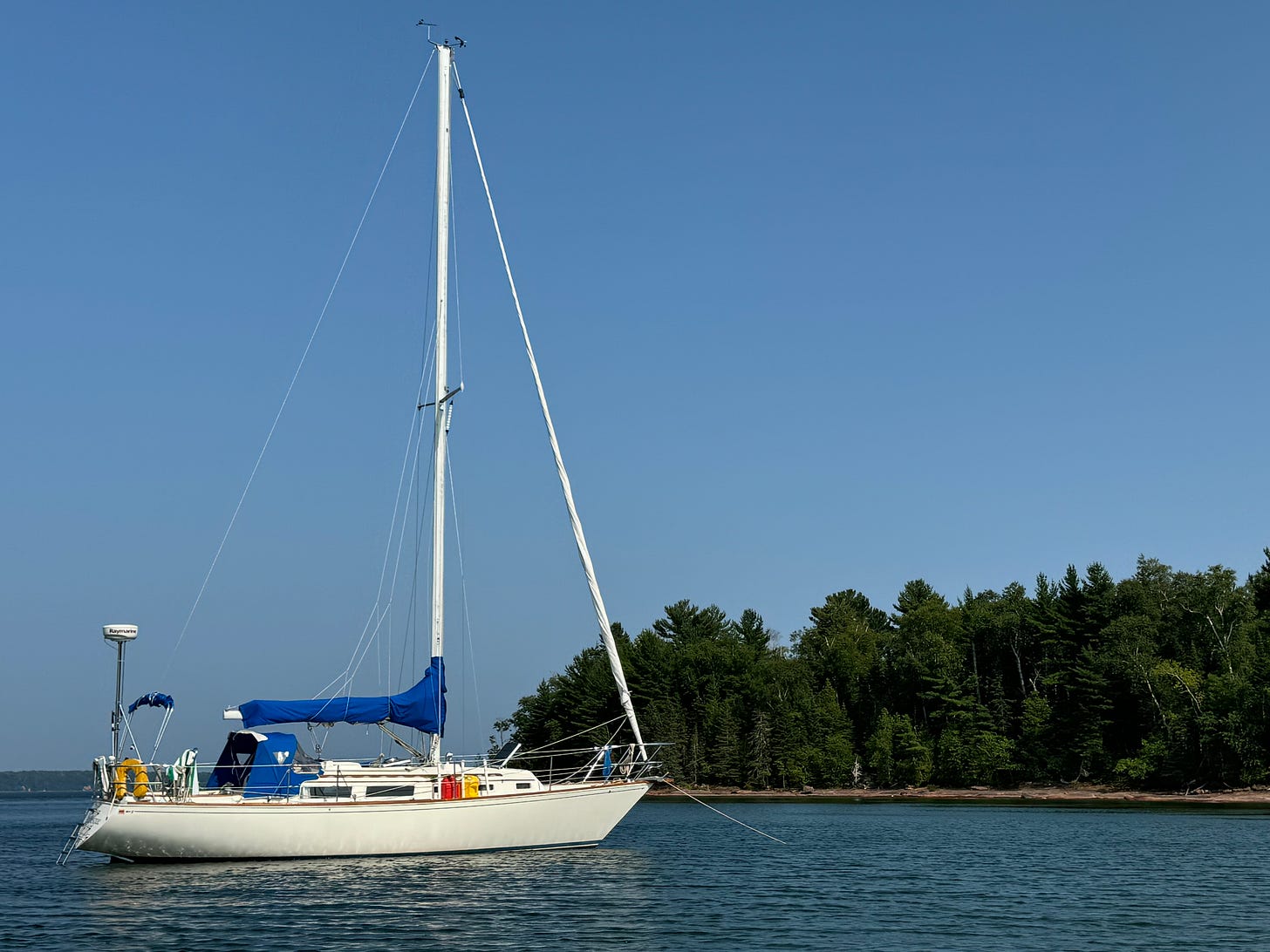

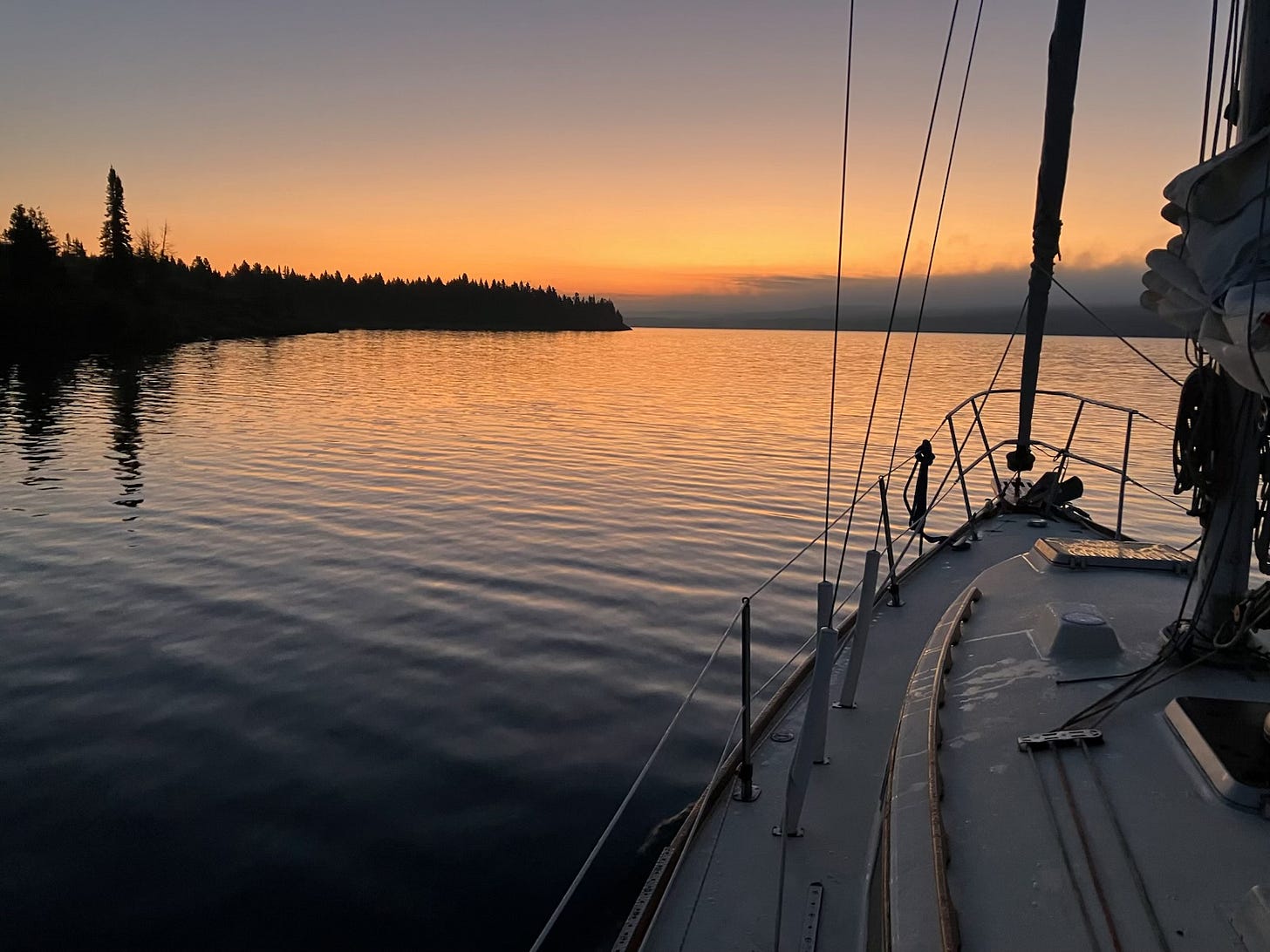
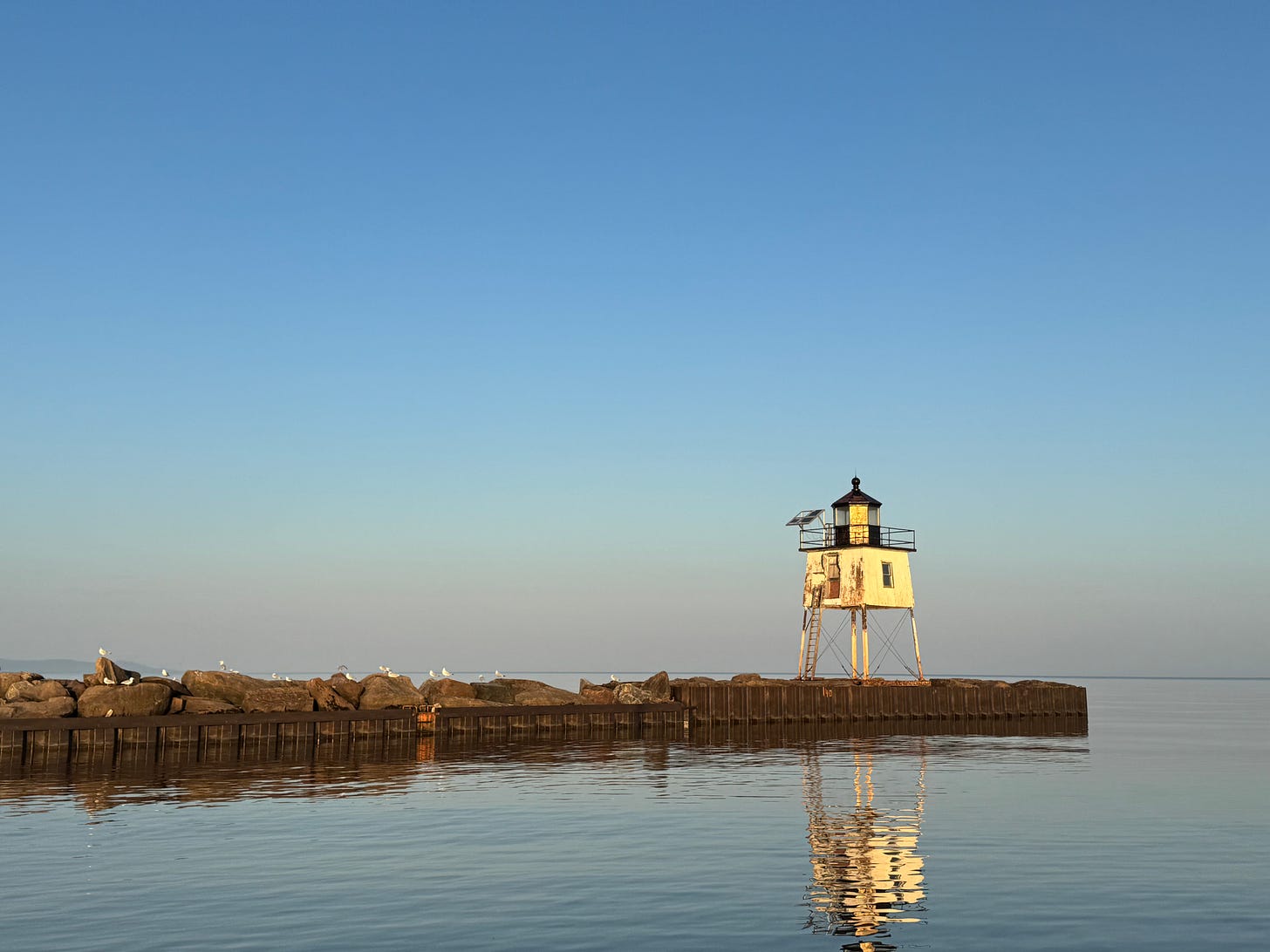
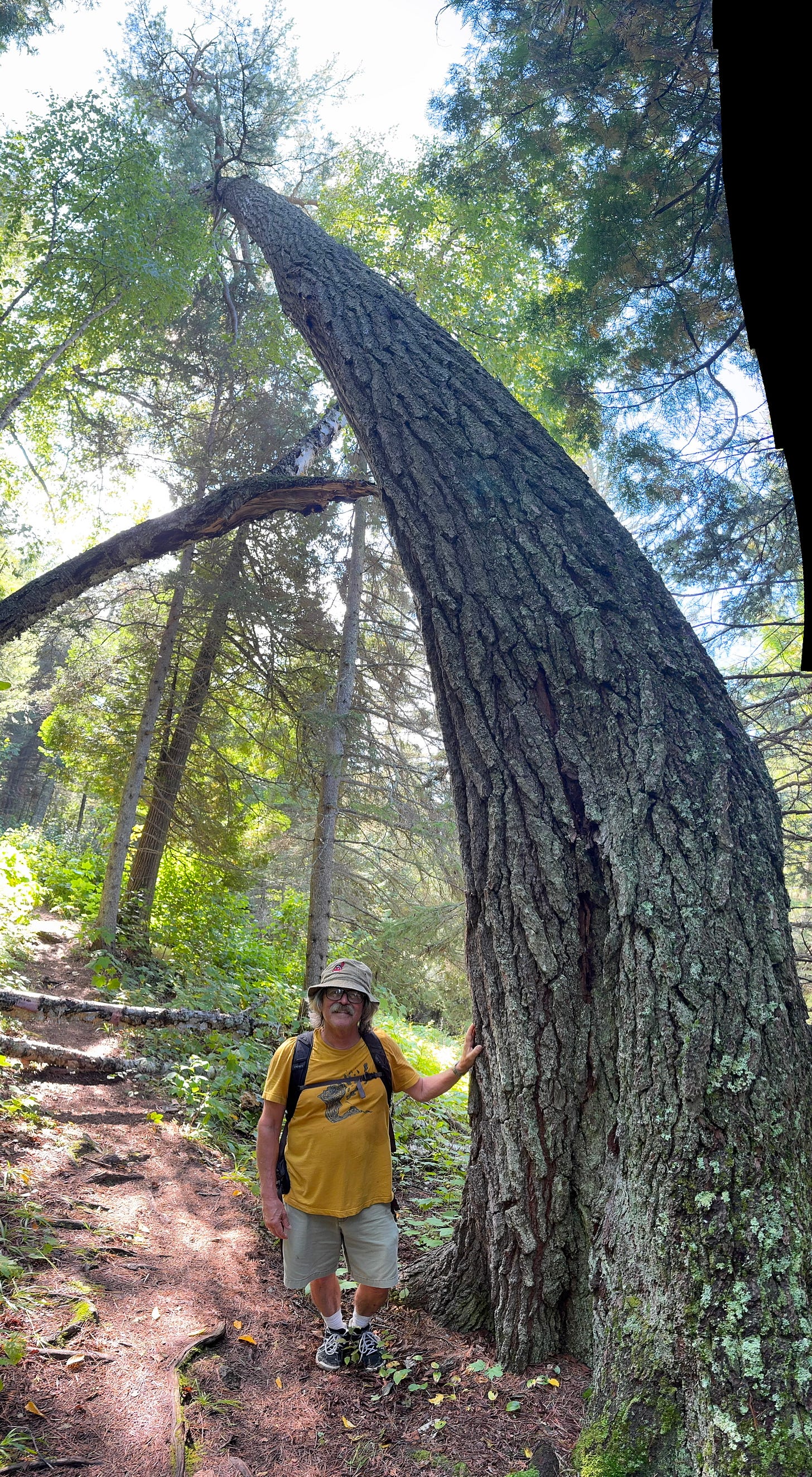
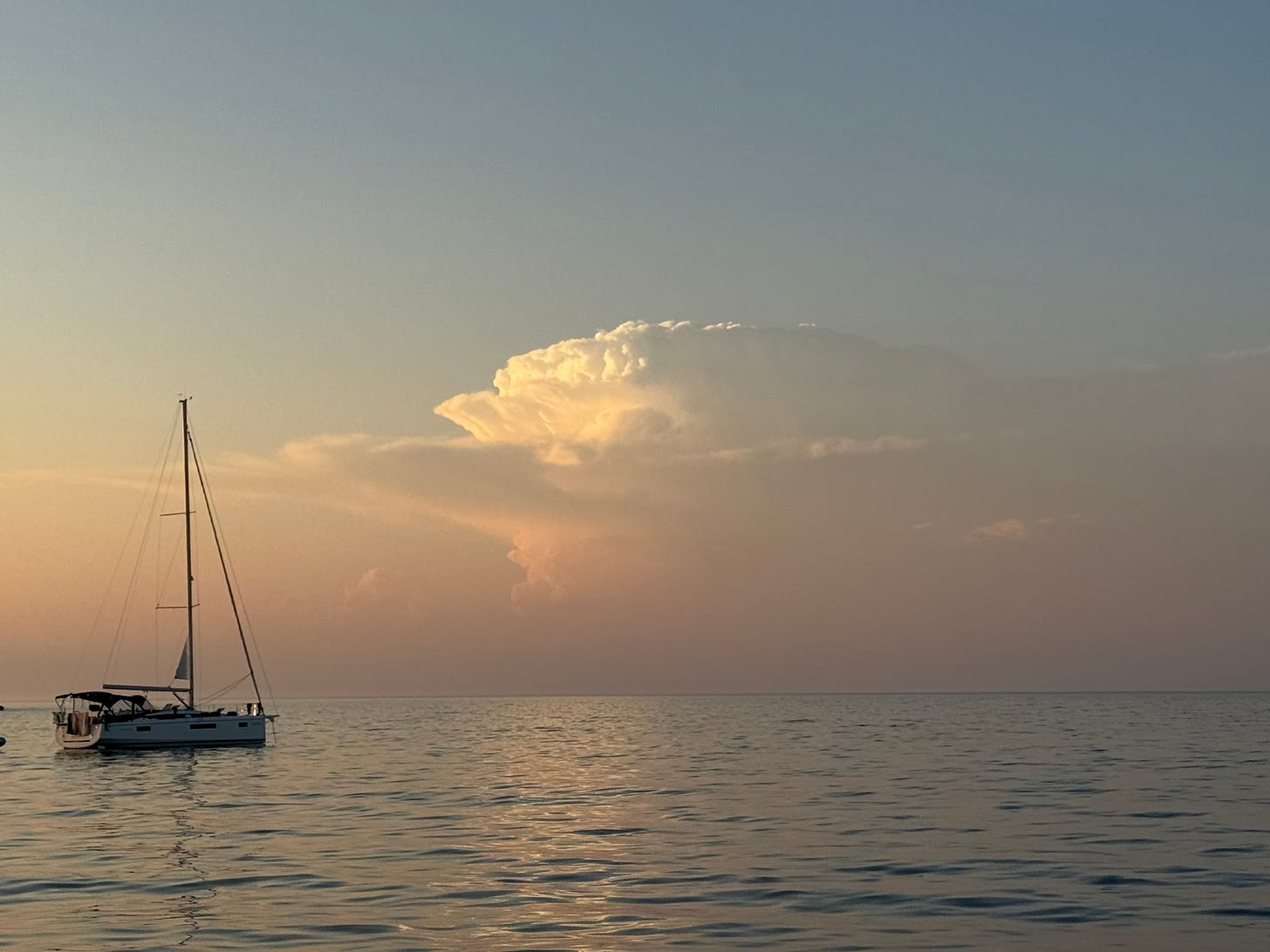
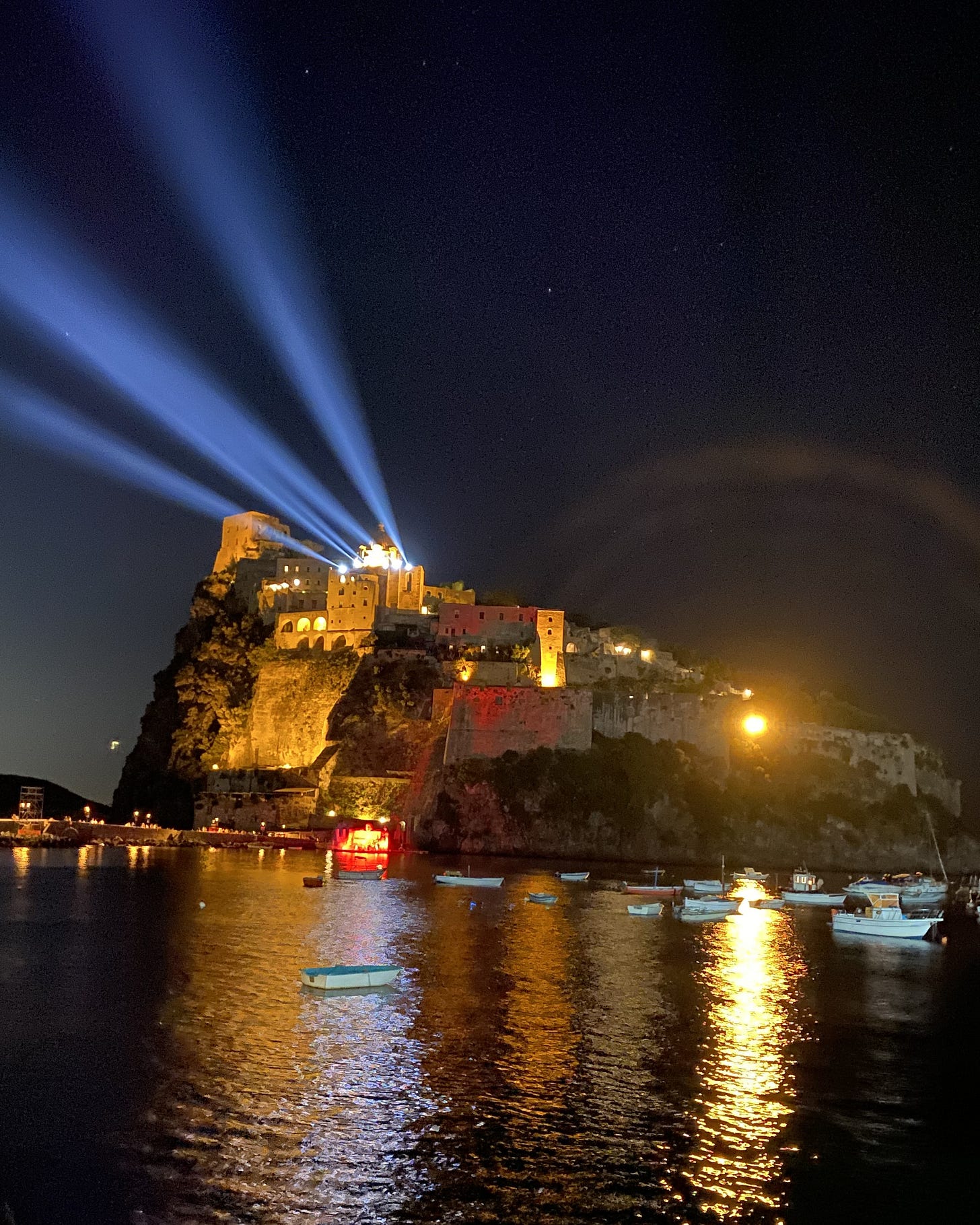
"the Milky Way, like…well…spilled milk" - how romantic!!! You're a wonderful writer.
Love.